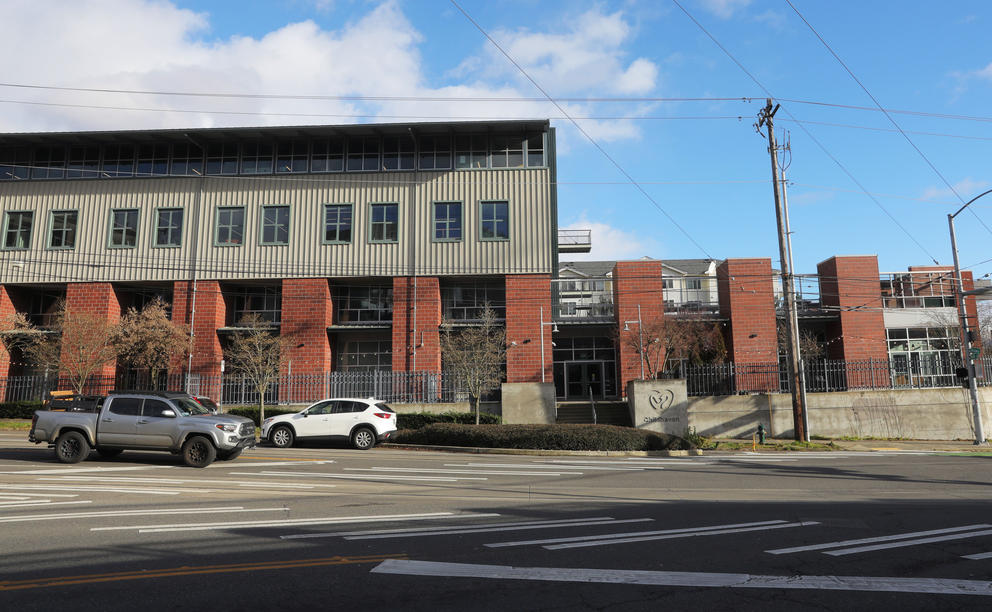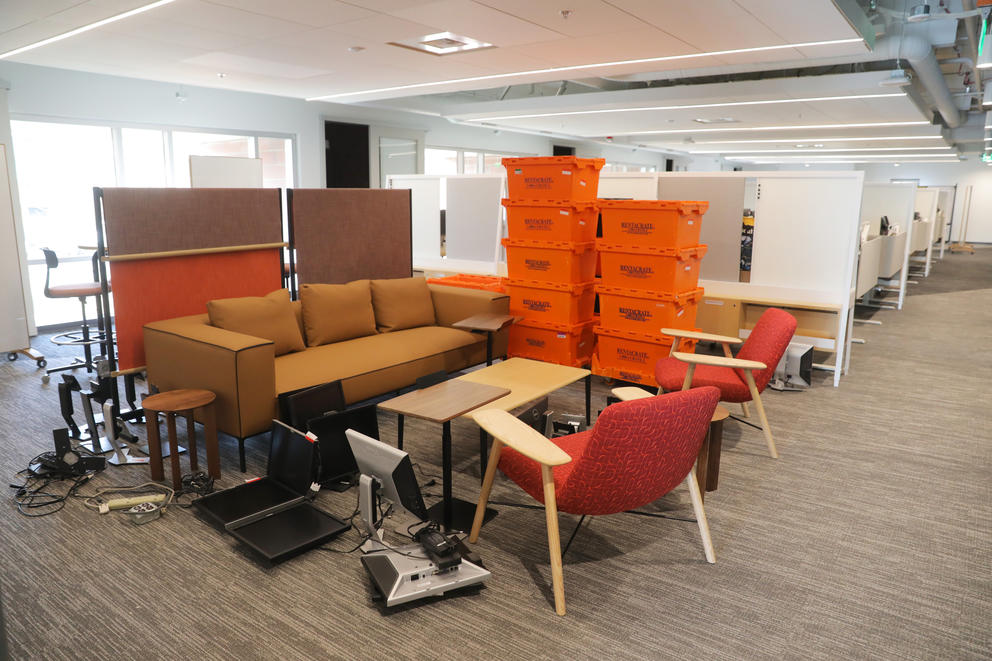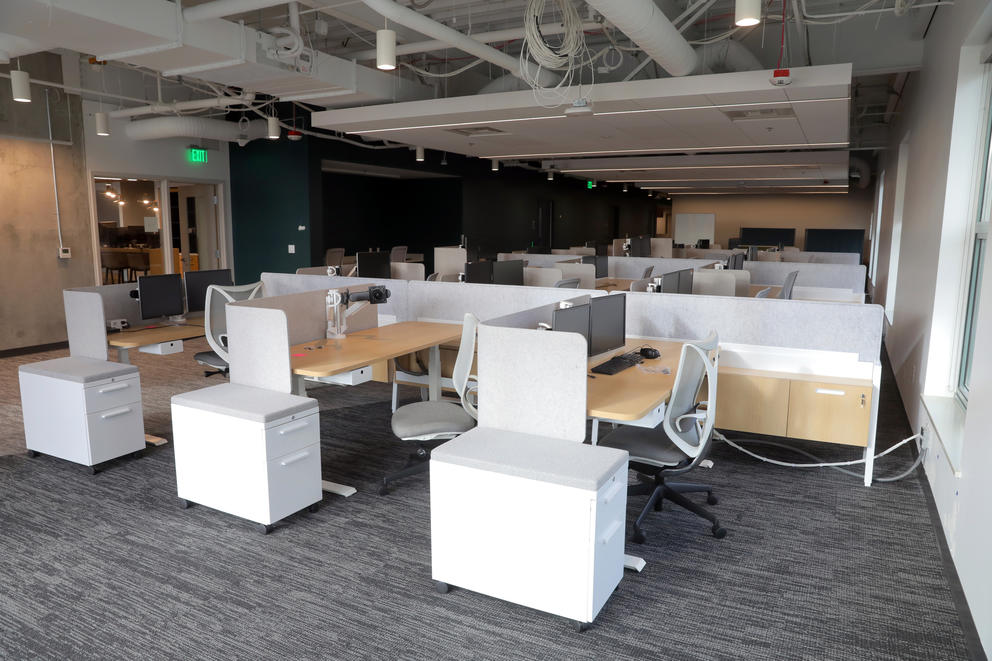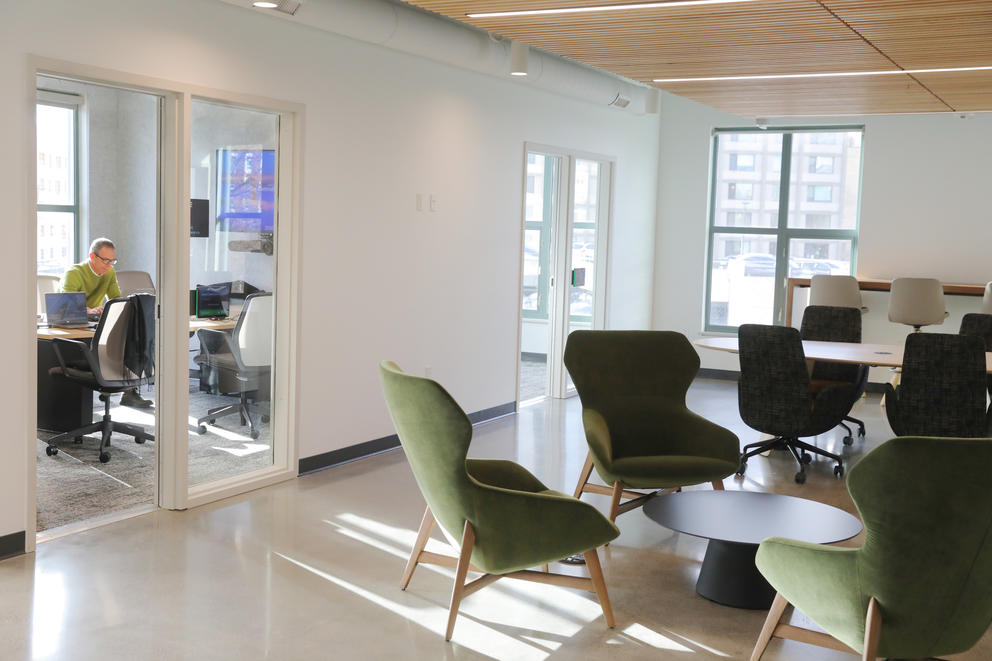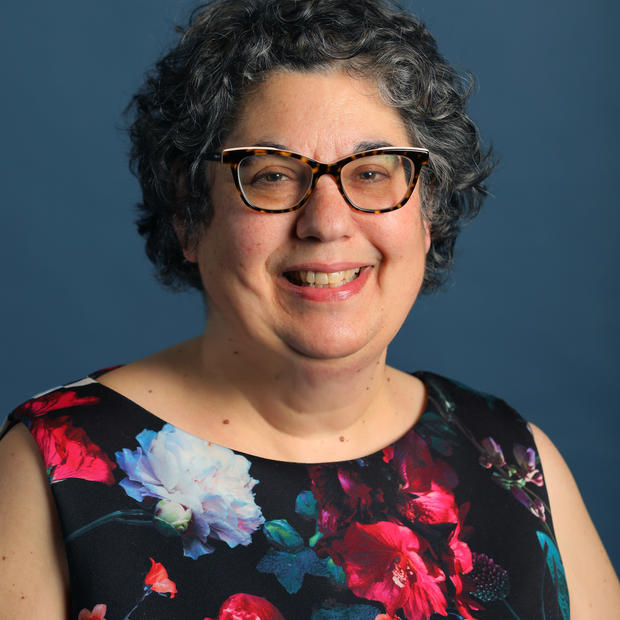The community-funded PBS media organization moved into 316 Broadway this week after four decades on the corner of Mercer and Fifth. Cascade Public Media – also in the midst of a transition toward a new name, Cascade PBS – owned that building at 401 Mercer, but not the land underneath, which is owned by the city of Seattle. The long-term lease has ended, necessitating Cascade Public Media to find a new home.
The company began looking for a new building and raising money for the move a few years ago, according to Cascade Public Media President and CEO Rob Dunlop.
The new facility has several large gathering spaces with potential to enable new types of community engagement. “The thing this building offers is a chance for us to reimagine the ways in which we interact with the community,” Dunlop said.
The community spaces initially will be used by Cascade Public Media for its own public events, but eventually other organizations will be invited to hold events there as well.
“We haven’t worked all the details out. We need to get settled first,” Dunlop said. “This is more visionary at this point than it is operational.”
He said the new building reflects that Cascade is more than a media company and aspires to be a community-building organization that Dunlop says “puts the public in public media.”
Berger is also looking forward to exploring the new neighborhood, which is steps away from Seattle University, a streetcar ride away from the Chinatown-International District, close to the heart of Seattle’s historically Black Central District and a short walk from the restaurants, retail and light-rail station on Capitol Hill.
Berger said the location feels more central than the previous building at Seattle Center.
“I like the location because instead of being orphaned on that corner of Seattle Center – part of it but not part. The new building puts us on doorsteps on Chinatown-International District, Central District, Capitol Hill, Rainier Valley, Yesler Terrace and Downtown, not to mention on First Hill. So it feels like more of the city is right there.”
Berger said he’s interested to see what the city does with the property, which once hosted the 1962 World’s Fair “girly” zone, Show Street, and was mostly dormant before the KCTS building was constructed in the 1980s. Berger pointed out that the old KCTS building is next to Memorial Stadium, which is also slated for redevelopment in the near future.
Berger said he’ll miss the building and the work he did there recording the Mossback’s Northwest TV series.
“I will always have a sentimental attachment to it as the place where I got my first TV experiences as a panelist on Week in Review back in the ’90s, and then with Mossback’s Northwest. I never thought TV was a medium for me, but now I like it,” Berger said.
The city of Seattle has not said yet what it plans to do with the former KCTS building, but they are considering both short-term use and long-term redevelopment.
A consultant to Seattle Center recommended that in the short term, the building may be best used as warehouse and storage space, which is in short supply in the area, and because the office-space market in Seattle is slow. The building’s soundproof recording and editing rooms and its television studio may be marketable for short-term rentals, the consultant, the Jacobsen Group, wrote in its report.
The 401 Mercer building was designed at a time when KCTS 9 was exclusively a broadcaster and, as Dunlop notes, a lot has changed in the world over the past 40 years. The new building is a reflection of that change.
“Not only is media very different but the needs of the community are very different around media,” he said.
The new building wouldn’t be possible without the investment community members made through their donations, he added. “We’re really grateful to our community. It’s really humbling.”

